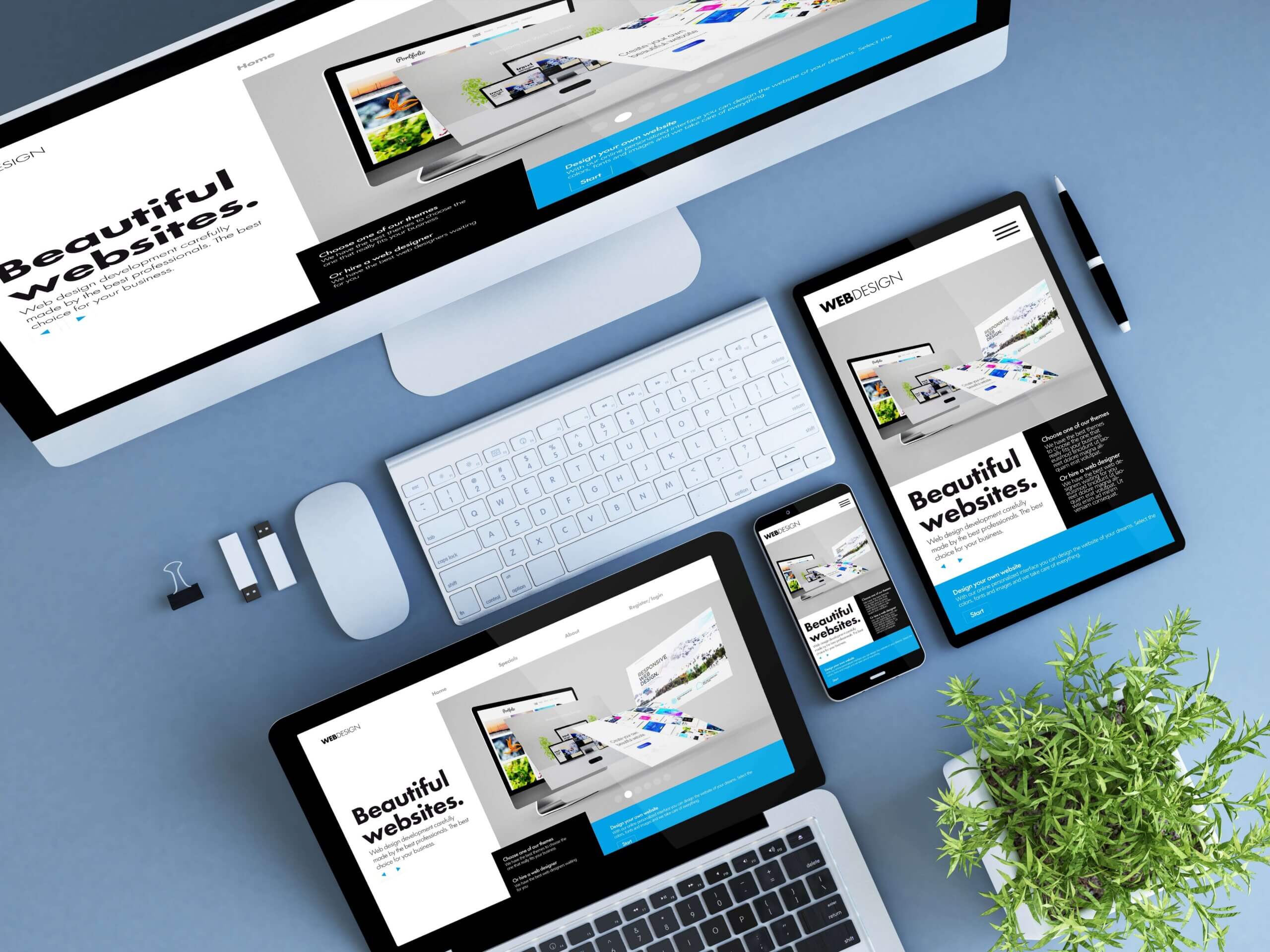
A minimalist website design features minimal graphic elements and typography. The most important part of this style is choosing your typeface, and other materials on your site should match its overall design. Make sure to consider your audience and ensure that the typeface is easy to read. You can find more information below. If you're having trouble creating a minimalist website design, contact us!
For minimalist website design, white should be preferred
A minimalist design will consist of a color palette based on two or more font families and a single color. It should be clear about the importance of primary information and imagery, not cluttering web pages. Whitespace allows the user to be focused on the content of the website and not on any distractions. It forces web designers and developers to be more selective when using color. This ensures that the message is clear.
White space not only makes a website easier to read but also helps to emphasize important elements such as images or call-to-actions. Most people look at websites' first pages. This is why you should include all your contact information and calls-to-actions in that area. A white background makes it easy for users to identify the most important elements of the design and allows them to easily read it. White is the best choice for minimalist website designs.

Bright colors
While bright colors have many benefits, they can also cause problems. It is important to use them sparingly in the most important areas. These colors will aid your visitors to adjust to the colors and help you to distinguish important calls for action. These colors will make your website more attractive and will help you to attract visitors. Find out the best examples for minimal design that use bright colors.
Contrasting hues are a great way to draw attention. This website design is well-suited for combining colors. A bright yellow/green color works well with the grey and black background. The bright yellow attracts the eye to the title and path up the mountain as well as the call-to-action buttons. These colors work to create a sense of dynamism and excitement on your website. This design is sure to appeal to many people, so it should be used sparingly.
Hidden navigation
Hidden navigation is a popular option for minimalist website design. This style of web design emphasizes the use of a minimal amount of navigation so that visitors can focus on other design elements such as the call to action, scheme, and card elements. A minimal amount of navigation improves conversion and encourages better interactions with users. The user does not have to spend too much time searching for pages. They can quickly spot calls-to-actions.
Hidden navigation buttons or links are another common mistake in minimalism. This can be a good idea, but it can make the website less user-friendly. If the icons or links are unfamiliar, users may be confused and get lost. Hidden navigation is not a good idea. Sites that have a lot of content shouldn't use this method. Instead, keep the navigation elements visible. It is also a great way to optimize search engine results.

Typography
If you've ever looked at a minimalist website, you've probably noticed that the fonts are very simple, often black. Although large headlines and logos can seem intimidating on most websites, bold fonts and legible body text can make an impact. Typography adds meaning to dynamic visuals, white space and typography. Each font is unique and has its own language.
Minimal websites don't have to be boring. However, they can still use color to stimulate emotion and encourage people to interact with the content. Good typography should not be distracting or create a cognitive burden for readers. To engage visitors, use a variety of colors in your minimalist website design. However, keep the overall look simple yet elegant. To evoke an emotional response, you can also use bold type and images.
FAQ
Web development: Is it hard?
Web Development is hard but you can learn it if you are passionate about coding.
The only thing you need is to search for the right tools and follow their steps step by step.
There are many tutorials available on YouTube and other platforms. There are also free online programs like Sublime Text and Notepad++.
You can also find many books in libraries and bookstores. Here are some of the most popular:
O'Reilly Media's Head First HTML & HTML
O'Reilly Media's Head First PHP and MySQL 5th Ed.
Packt Publishing, "PHP Programming For Absolute Beginners",
I hope this article was helpful.
Can I use HTML & CCS to build my website?
Yes! If you've read this far, you should now know how to create a website.
After you have learned how to structure a website, you will need to know HTML and CSS.
HTML stands for HyperText Markup Language. It is similar to writing a recipe. You would list ingredients, directions, etc. HTML also tells a computer what parts of text should be bolded, underlined or italicized. It's the language for documents.
CSS stands for Cascading Style Sheets. You can think of CSS as a style sheet for recipes. Instead of listing each ingredient or instruction, you will write down the general rules for font sizes and spacing.
HTML tells the browser what HTML is and CSS tells it how.
If you don't understand either of those terms, don't fret. Follow these steps to make beautiful websites.
How much do web developers make?
When working on a website for yourself, you'll probably earn around $60-$80 per hour. You can charge more if you're an independent contractor. You could potentially charge anywhere from $150-200 per hour.
Statistics
- It's estimated that in 2022, over 2.14 billion people will purchase goods and services online. (wix.com)
- It enables you to sell your music directly on your website and keep 100% of the profits. (wix.com)
- Studies show that 77% of satisfied customers will recommend your business or service to a friend after having a positive experience. (wix.com)
- At this point, it's important to note that just because a web trend is current, it doesn't mean it's necessarily right for you.48% of people cite design as the most important factor of a website, (websitebuilderexpert.com)
- The average website user will read about 20% of the text on any given page, so it's crucial to entice them with an appropriate vibe. (websitebuilderexpert.com)
External Links
How To
What is website hosting?
Website hosting is the location where people go when they visit websites. There are 2 types.
-
Shared hosting – This is the most affordable option. Your website files reside on a server controlled by someone else. Customers visit your website and send their requests over the Internet to this server. The owner of the server then hands off the request to you.
-
Dedicated Hosting - This option is the most costly. Your website is located on only one server. Your traffic is private because no other websites have shared space on this server.
Most businesses choose shared hosting because it's less expensive than dedicated hosting. With shared hosting, the company that owns the server provides the resources needed to run your website.
There are pros and disadvantages to each option. These are some of the major differences between them.
Pros of Shared Hosting
-
Lower Cost
-
Easy To Set Up
-
Regular Updates
-
It is possible to find it on many web hosting companies
Hosting shared with others can cost as low as $10/month. This price often includes bandwidth. Bandwidth refers to the amount of data you can transfer across the Internet. Even if you upload only photos to your blog you might still have to pay more for large amounts of data that you transfer through your account.
Once you begin, you will soon see why you spent so much on your previous host. The majority of shared hosts offer limited customer support. Although their techs may help you with setting up your site, it's not a common practice.
A provider with 24-hour telephone support is a good choice. They will attend to any issues you have while you sleep.
Cons of dedicated hosting
-
More Expensive
-
Less common
-
Specific Skills Required
With dedicated hosting, you get everything you need to run your website. You won't worry about how much bandwidth you are using or how much RAM (random Access Memory) you have.
This means you will need to spend more upfront. But once your online business starts, you'll realize you don't need any technical assistance. You'll quickly become an expert at managing your server.
Which is better for my business?
The answer will depend on the type and purpose of your website. If you are selling products, shared hosting may be the best option. It's easy to set up and maintain. Because you share a server, you will most likely receive frequent updates.
However, dedicated hosting is the way to go if you want to build a community around your brand. Instead of worrying about traffic, you can concentrate on building your brand.
If you're looking for a web host that offers both options, we recommend Bluehost.com. They offer unlimited monthly data transfers and 24/7 support. You can also register domain names for free.